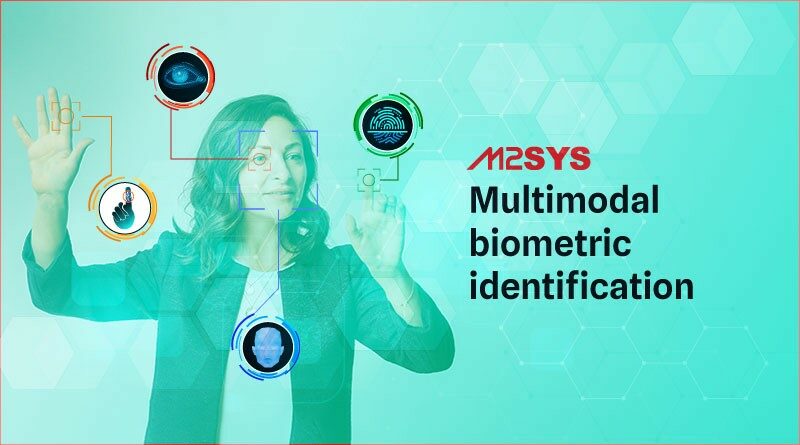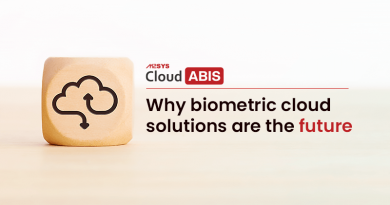What is a Multimodal Biometric Identification System?
Biometric technology, which comprises fingerprint, face, iris, and vein recognition, is now the most convenient and secure form of identification. Biometrics is a rapid, dependable, and precise type of identification, and now you may use several identification traits under a single identification system thanks to a multimodal biometric identification system. This article will teach you all there is to know about multimodal biometrics.
A single biometric identification system
A single biometric identification system has a single modality. By modality, we mean the integration of fingerprint, face, iris, or vein recognition into a web, mobile, or desktop-based application. Each biometric system has its own set of benefits. Face recognition, for example, is fast and “non-contact,” which can significantly improve the system’s reaction time while minimizing the hidden hygiene risks associated with machine touch.
Iris recognition is a distinctive and secure biometric. Furthermore, for other biometric technologies, iris recognition is a non-contact recognition of a living individual. Fingerprint recognition technology has many advantages, including early technical development, reasonably mature technology, low false identification and rejection rates, inexpensive product cost, and ease of popularization.
There are also unavoidable problems, such as the fact that human facial features are not fixed and can be easily altered by brightness and other factors in photography, affecting the accuracy of face identification.
The most common is a fingerprint recognition system, but if the finger is damaged or in a moist environment, the fingerprint recognition function will fail. Furthermore, human facial traits are not consistent, and they are easily changed by light and other circumstances in image capture, reducing the accuracy of face identification.
The iris can only be photographed from a short distance away. If the user’s position is slightly off, it may be impossible to collect a clear iris. At the same time, the identification distance, complicated lighting environment, eyelash obstruction, and irregular pupils all have an impact on the accuracy of iris recognition.
As can be seen, each biometric identification technique has its own set of advantages and disadvantages. This is why the multimodal biometric ID system was developed to reliably verify individuals based on several biometric traits. If one method of authentication fails, another can be utilized to identify and verify any person.
A multimodal biometric identification system
A multimodal biometric ID system integrates two or more biometric authentication systems, each with its own set of advantages. As you have seen, the disadvantages of single authentication are eliminated by a multimodal biometric identification system, which provides a robust system that is nearly failsafe.
The primary distinction between multimodal biometrics and a traditional single biometric method is that a multimodal biometric identification system can gather different biological characteristics such as fingerprints, faces, iris images, and so on using independent or multiple collection methods combined into one collector, and then analyze and judge the characteristic values of multiple biometric methods to identify and authenticate.
Biometric technology is transitioning from a single-mode approach to a multimodal approach. More intricate and diverse authentication scenarios cannot be supported by a single biometric authentication. Multimodal biometric identification can combine face, fingerprint, finger vein, iris, and other biometrics for more accurate identity authentication and centralized and unified system administration.
Why use a multimodal biometric identification system
A multimodal biometric identification system outperforms a single modal biometric identification system. The introduction of a cloud-based biometric identification system or a biometric as a service solution has simplified implementation. Here are some of the benefits of a multimodal biometric identification system:
1. Failproof
The fundamental benefit of a multimodal biometric identification system is that it is nearly fail-proof. For example, if you have a cut on your finger, you can utilize iris detection or face recognition to authenticate yourself.
2. Acceptance
Multimodal biometric identification systems have a substantially greater acceptance rate than single biometric identification systems. Because many users may raise privacy concerns with facial recognition, they can employ vein recognition, which is internal and does not raise privacy concerns.
3. Security
When there are several authentication channels, the system can retain additional benchmark recognition parameters. The level of security required is determined by the system administrator. If an identification fails the test, the system can use another identifier to better identify the individual.
Finally, multimodal biometrics enable greater accuracy and dependability. All that remains is to ensure that your software does not risk a person’s privacy or information. In organizations where security is a major issue, there is no better solution than multimodal biometrics. When a cloud biometric system is used, the implementation becomes more user-friendly. If you need to test the cloud biometric system, please contact us.











